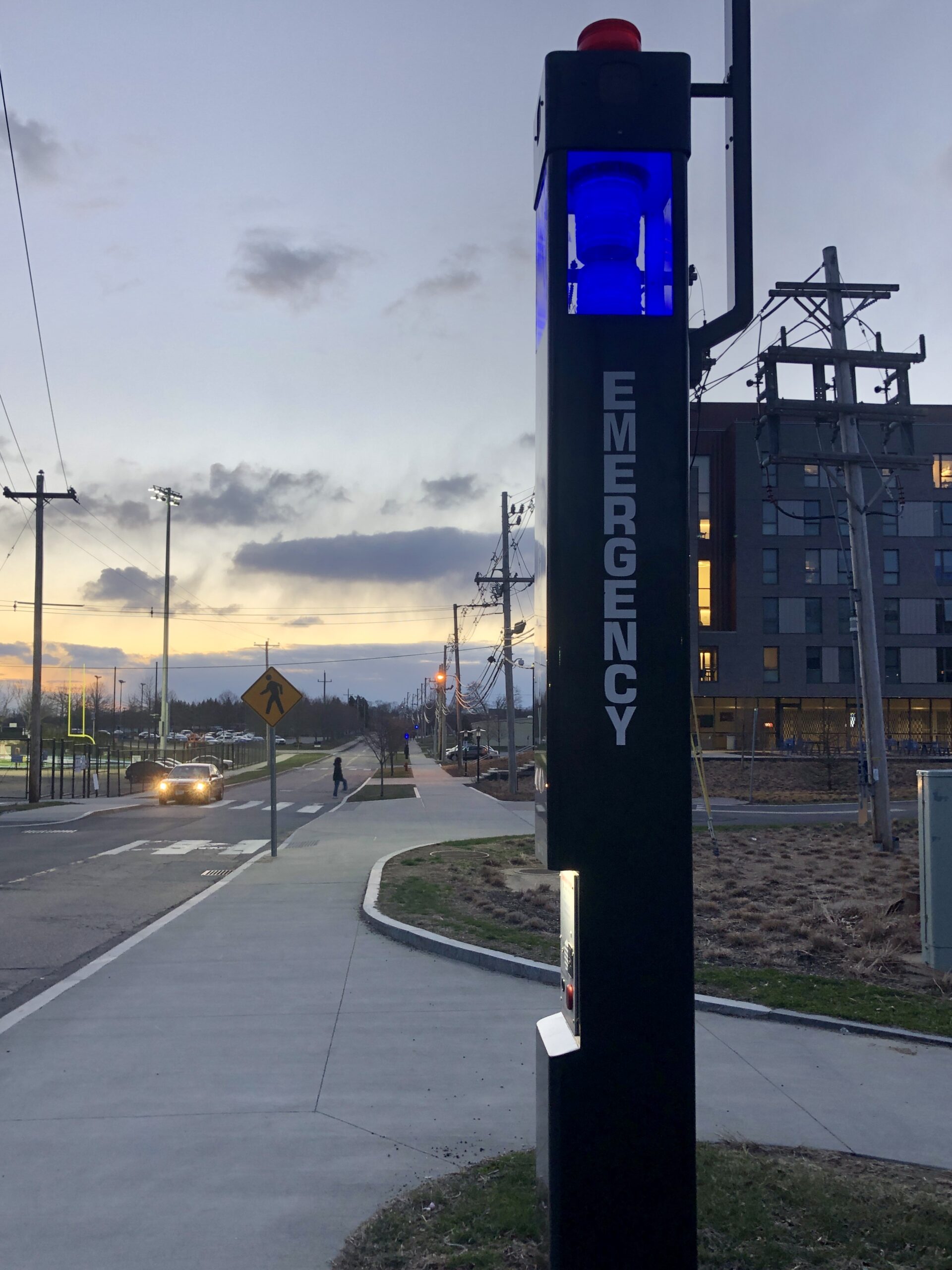The bi-annual Student Senate blue light walk was held last week as a way to check on safety measures on campus. PHOTO CREDIT: Melissa Marchese | Staff Photographer
On Thursday, March 31, the Student Senate held their bi-annual Blue Light Walk, a night where the Senate walks around campus and tests the blue light system to see if they are functioning properly.
The event was coordinated by Emily Gamache, the current vice president of the Student Senate who was the chair of the College of Health Sciences and Campus Affairs Committees at the time. She was joined by other senators and community members for the walk.
For this walk, Gamache placed everyone into separate random groups that she made for everyone who signed up for the walk. Once everyone had been placed into their groups, Gamache then gave the group leader a piece of paper with a highlighted section for them to walk around and check the blue lights in their respective highlighted section.
What was anticipated to be a long night due to the number of blue lights on campus turned out to be a quick 20-minute walk with several groups covering a certain area of the campus because of Gamache’s plan.
Gamache’s group covered the area from the Multicultural Center to the end of Lower College Road near the Memorial Union. Her group checked five blue lights and all of them functioned except one. The dysfunctional light did not flash in the way it was supposed to and is scheduled to be fixed soon.
Once the walk was finished for Gamache’s group, she spoke briefly about the importance of the blue lights and why the walk itself is important.
“So, just like most technology, I think that it can get old and a lot of the lights do just burn out, so that’s the main reason that they don’t work,” Gamache said. “We have run into problems in the past where we might hit a button and we say the number and it’s dialing or sending from another location.”
Public Safety Chief Michael Jagoda said that the Public Safety Department likes to stay on top of all the blue lights and make sure that they’re functioning properly. While the Student Senate checks the blue lights twice a year, the Public Safety Department is constantly checking and fixing the blue lights monthly, according to Gamache.
“I believe it is monthly that they do go and check and then they’re able to fix it throughout the month and then again they check to make sure the next blue light system is working,” Gamache said. “Their system of fixing it is they send someone out to the light that they found that is not working and they fix it on the spot.”
According to the results from the walk, 25 lights were checked in total and of those 25, three of them had lights that didn’t work, four of the blue lights had issues with calling and 10 of the lights had other problems.
Jagoda talked more about the blue lights and how the Public Safety Department does its part in checking and fixing the lights throughout the course of the year.
“We also have our interns regularly go out there and test our blue light phones throughout the year to make sure that they’re working properly and everything,” Jagoda said. “So, we have the ability to internally fix our phones with our facilities or we have a contract with RamTel who oversees our blue phones.”
He went on to say that their interns work throughout the spring, summer and fall to make sure the blue lights are operable and are functioning properly.
Jagoda said that the blue lights aren’t just for emergencies, they can also be used to contact someone about a variety of issues, whether it be about a car problem, a suspicious person sighting or any feeling of discomfort on campus.
Jagoda said that it’s not often that students use the blue light system on campus.
“I would say probably maybe five to ten times a semester and I would say a majority of them are not emergency-related, more of a call for services such as maybe a jumpstart or a lockout or maybe even reporting a suspicious person or vehicle,” Jagoda said.
Jagoda talked about how the Public Safety Department has different ways to fix their phones. They can do it internally with their facilities at their disposal or someone from RamTel will come and fix the phones themselves if needed.

